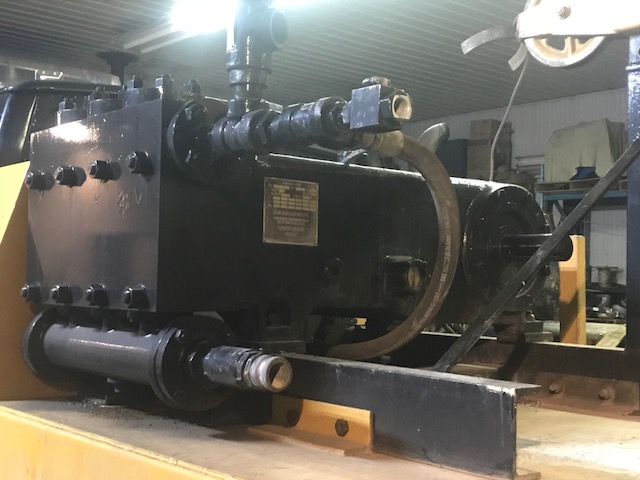Well Drilling
Water is the source of life. From this source that we intend to build domestic ecosystems. (Continued from bottom here.)
Three trucks were involved in accessing water.
The drilling rig, the yellow water truck, complete with a mixer for cement grout and dolomite clay and equipmed to hydro-frack. (Water only tho, no chemicals). The large pick-up that accompanied the big trucks looks small in comparison.
Once the rig was set up,
they drilled a ten inch diameter hole down 20 ft. Into this they lowered a six inch iron well casing. They then pumped the space between the casing and the rock two thirds the way up with a cement mix.
The rest of the space, right up to ground level, was filled with dolomite and water. Dolomite is a clay that expands when wet. This process thoroughly anchored the well casing and sealed it into the hard rock.
Then another drill bit,
small enough to fit inside the iron casing, was lowered to the bottom of the hole and continued drilling.
While the rig turned the drill, compresed air, forced down through the pipes, powered a mechanism that continuously pounded the bit against the rock. Water, also forced in through the pipe, mixed with the rock dust and with the help of the escaping air, percolated up to the surface and flowed away from the drill hole. The driller's assistant was kept busy digging the ever growing pile of chips out of the way and making channels for the water to flow away.
I was impressed that they were able to drill the length of a 20 foot pipe through solid granet in fifteen minutes or so. I was less impressed as pipe after pipe descended into the hole withour any noticable increase in the amount of water over-flowing with the chips. At 200 ft., I was getting very nervous about the accumulating expense. Still the hole was dry.
What is to be done? This crew has a fracking pump on their water truck.

The heavy cast-iron pump has three strong pistons driven by a heavy chain drive that transferes several hundred horsepower from the water truck's engine to the pump.
The contraption pictured here
has a black rubber gasket near the bottom that squeezes into the hole and a set of ribbed iron pads just above it that drive against the rock to hold it tight in place. This is lowered into the hole on lengths of drilling pipe. Once it is expanded to hold in place, a hose from the fracking pump is attached to the header.
Water was forced at 3000 pounds per square inch (psi) into the well hole below the seal. By adding lengths of pipe at each round, pressure was applied at 40 ft., 80 ft., and several incraments below that until the seal was just 20 ft. or so above the bottom of the drill hole.
After the first couple of fracks, the pressure of the water wouldn't rise above a few hundred psi. The water was going somewhere. Blowing the water out of the hole between each action, I was reassured that its cloudy appearance meant that material was being displaced from the rock somewhere underground.
When it was all over, the water being blown up from the bottom of the hole didn't stop. Presently, the water rises in the pipe to just 10 feet below ground level. The flow tested at 6 gallons per minute. 8640 gallons per day should be enough.
Claire was impressed looking at the derrick while the drillers removed the pipes from the hole one by one and secured them for travel to the next job.
Below, Tony is welding an extension onto the well pipe so that it will be the required height above ground when we back-fill the ares for easier access from the new gardens.
The blue tubing on the pick-up was used to measure the water flow. The well filled up over night to 10 ft. below ground-level.
Many thanks Tony and Dillon.